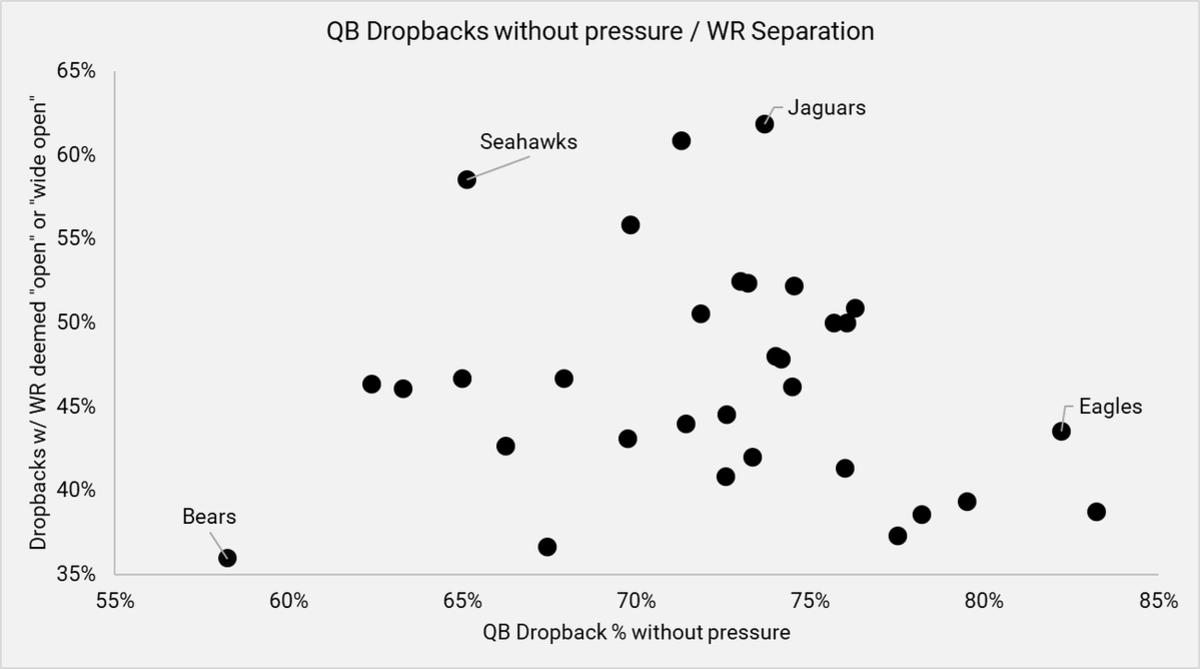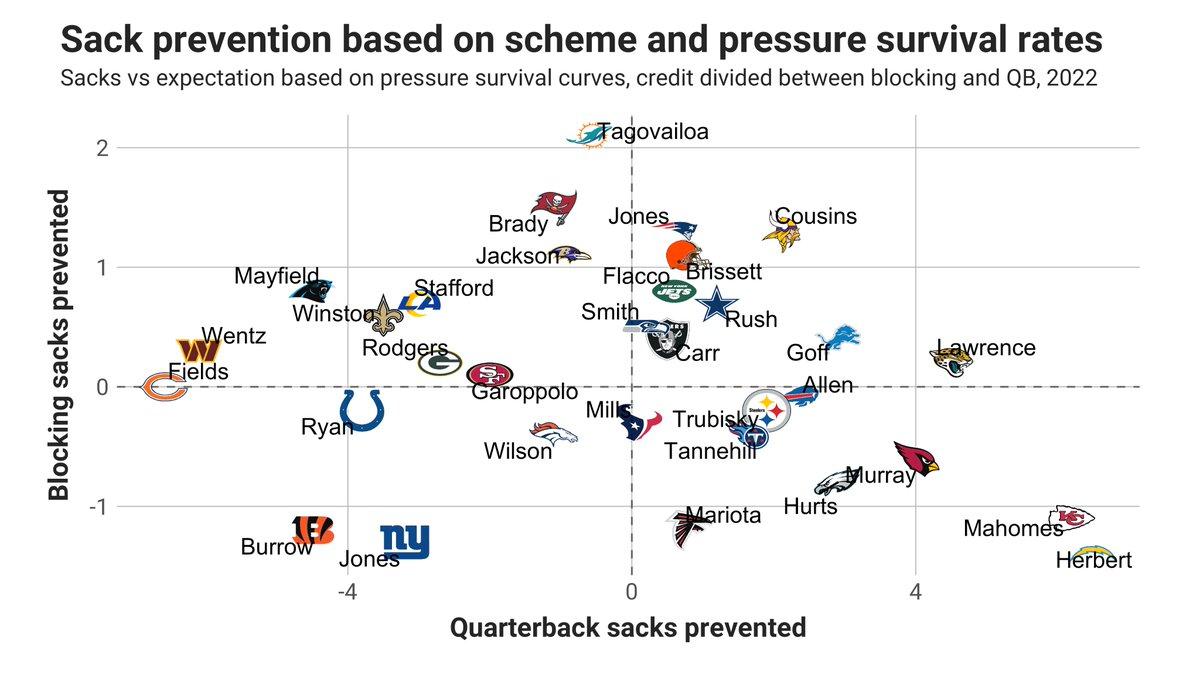The Bears' completely different approach to roster building

For about 24 hours in late January, it appeared Ryan Poles was set to be the next general manager of the Minnesota Vikings.
Reporting from Purple Insider’s Matthew Coller indicated Poles was the Vikings’ top choice. He and Kwesi Adofo-Mensah were scheduled for final interviews on back-to-back days, with Poles’ interview the latter.
We know how that story ended.
Poles never made it to Minnesota for another interview as the Chicago Bears stepped in front of the Vikings and lured him away to be their general manager. Soon after the Vikings hired Adofo-Mensah and each team set off on their own, distinct path.
It has remained unclear exactly why Poles opted for the Bears instead – whether it be financial reasons, roster qualms or the potential for more control in the organization. What is known is that since Poles took over, he’s pushed the Bears franchise in a completely different direction than Adofo-Mensah has with the Vikings.
The Vikings have attempted to remain on the path of playoff relevance, keeping the core tenets of the team intact, molding the edges of the roster and folding a new coaching staff into the picture with hopes for greater success. So far it’s worked. The Vikings are 3-1 with a 76% to make the playoffs, per 538.
Meanwhile, don’t let the facade of the Bears’ 2-2 start sway the obvious rebuild in progress at Halas Hall. Chicago has essentially punted on the 2022 season hoping for greener pastures in 2023 and beyond. The team has the second-largest dead cap hit in the NFL this year, $63.3 million. Khalil Mack accounts for $24 million of that, a number that’s nearly equal to the Vikings’ total dead cap hit, per OverTheCap.com.
Nick Foles is owed more than $7 million and Andy Dalton and Eddie Goldman are both owed in excess of $5 million. Tarik Cohen, Jimmy Graham, Danny Trevathan and Charles Leno Jr. are owed a combined $13 million not to be on the Chicago roster.
The result? Nearly full roster turnover. In Week 1, 15 of the team’s starters were new from the previous season. In total, nearly 60 percent of the roster has changed since last year’s opener. Almost all of the household veterans from the Matt Nagy era are gone. Mack, Goldman, Allen Robinson, Akiem Hicks, and James Daniels are all on new teams.
The funny thing is Poles won’t say it’s a rebuild. In April, when asked if the team was rebuilding, Poles pushed back.
“The ‘rebuild’ thing is like super sensitive,” Poles told the Chicago media. “We’re constructing a very good football team — regardless of how you use whatever term that is. We just continue to add talent and young talent, older talent, whatever it takes to make the best team possible.”
Whereas Adofo-Mensah has been clear about the line the team is straddling.
“I think when people look at teams, they sometimes do it in a very binary way,” he said. “They ask, ‘Are you either all-in or tearing down and rebuilding?’ And I don’t really look at the world that way. The way we look at it is we’re trying to navigate both worlds, we’re trying to live in today and tomorrow — or the competitive rebuild.”
Whether or not Poles admits it publicly, Chicago has its eyes squarely on the future. The massive dead cap hit severely limited the Bears’ options to improve the roster this offseason, as did the lack of a first-round pick, which was shipped to the New York Giants in the 2021 draft night trade for Justin Fields.
Fields sits squarely at the center of the rebuild, not because he’s the lone known building block amongst a sea of changing faces, but because he could find himself being one of those roster casualties in short order.
Early returns have not matched the high hopes for him coming out of Ohio State. Fields is 4-10 as a starter. He’s thrown nine touchdowns to 14 interceptions with a career QBR of 26. Through four weeks this season, Fields is last in PFF passing grade among quarterbacks that have taken 50% of their teams' dropbacks. He’s taken 100 dropbacks, by far the fewest of all starters, but has been sacked 16 times, second-most in the NFL behind only Carson Wentz. He’s generating turnover-worthy plays at the highest rate in the league and big-time throws at one of the lowest rates. His 3.40 average time to throw is the longest in the NFL and he’s being sacked 32.7% of the time he’s being pressured, again the highest rate in the league. His 50.7% completion percentage is the worst in the NFL.
The issue presented to Poles and head coach Matt Eberflus is how much of that is on Fields or the talent-ridden roster.
Pro Football Focus’s Brad Spielberger put together an informative chart detailing the severe lack of talent around Fields.

Fields is not only getting pressured more than any other quarterback by a considerable margin, his wide receivers are also worse at getting open than any other group in the NFL. That’s not a recipe for winning football. Fields’ starting wide receivers are Darnell Mooney, Equanimeous St. Brown and Dante Pettis. The unit was ranked as the 29th receiving core in the NFL by ESPN during the preseason. The offensive line was ranked 31st. As a roster overall, ESPN ranked it 30th in the NFL.
Here’s another great stat from Spielberger.
Team PFF pass block grade on true pass sets through Week 4 (no PA, no screens, etc.):
— Brad Spielberger, Esq. (@SpielbergerBrad) October 4, 2022
1. Eagles - 75.1
2. Broncos - 72.6 (Russ?)
t-3. Chiefs - 68.4
t-3. Browns - 68.4
5. Falcons - 64.3
32. Bears - 27.3
t-30. Dolphins - 30.3
t-30. Giants - 30.3
29. Rams - 31.4
28. Lions - 37.7
But Fields isn’t without blame either. While his offensive line isn’t holding up, Fields is also not performing while under pressure. Fields has turned 49 dropbacks under pressure into only five completions this season. His NFL passer rating under pressure is 27.4, higher than only Kyler Murray. He’s also been one of the worst at preventing sacks, per this chart from PFF’s Kevin Cole (this was before Week 4).

Sacks are both a quarterback and offensive line stat. Sometimes an offensive lineman is beat right away and there’s nothing the quarterback can do. Other times, uneasiness in the pocket can lead to unnecessary sacks. As mentioned before, Fields holds on to the ball longer than any QB in the NFL and predictably he’s been at fault for many of his sacks. All the quarterbacks on the far left of the chart have been bad at limiting sacks (noticeably Cousins has been above average at avoiding sacks).
This conundrum is a microcosm of the difficulties Poles has placed on his new regime with the complete rebuild. How can Fields be fairly evaluated without capable talent to accurately showcase his proficiencies along with his deficiencies? It’s the opposite scenario that many teams often find themselves in. Frequently, rebuilding rosters will be without a long-term scenario at quarterback and will look to find a replacement-level quarterback that can provide a baseline level of play that will allow the organization to evaluate the players around them. Think Jared Goff and Geno Smith. For the Bears, it’s the opposite. With a dearth of talent around Fields, it becomes much harder to judge his future prospects.
The truth is it may not matter. If the Bears pick in the top-5 in the next NFL draft the opportunity to pick a quarterback may be too great to pass up even if Fields is showing signs of promise.
Even so, the rest of the roster will still need an overhaul. Luckily, the cap hell the team is going through this year doesn’t extend beyond 2022. The Bears currently have $115 million in cap space heading into next offseason and can quickly flip their fortunes, provided they have solved the quarterback position, either with Fields or another option.
It frames an interesting question – one Poles certainly thought about when mulling the Vikings and Bears job. Which team has the better chance of reaching a Super Bowl first? The correct answer is likely Minnesota, given its likelihood of making the playoffs this season and the Bears’ relative shot-in-the-dark of finding a franchise QB, but Poles’ full tear-down strategy will certainly give us an up-close look at that theory over the next several years as the division rivals take two very different approaches towards the same goal.
Related: Welcome to Bears-Vikings, where it might get weird
Related: Vikings are living and dying by Justin Jefferson
